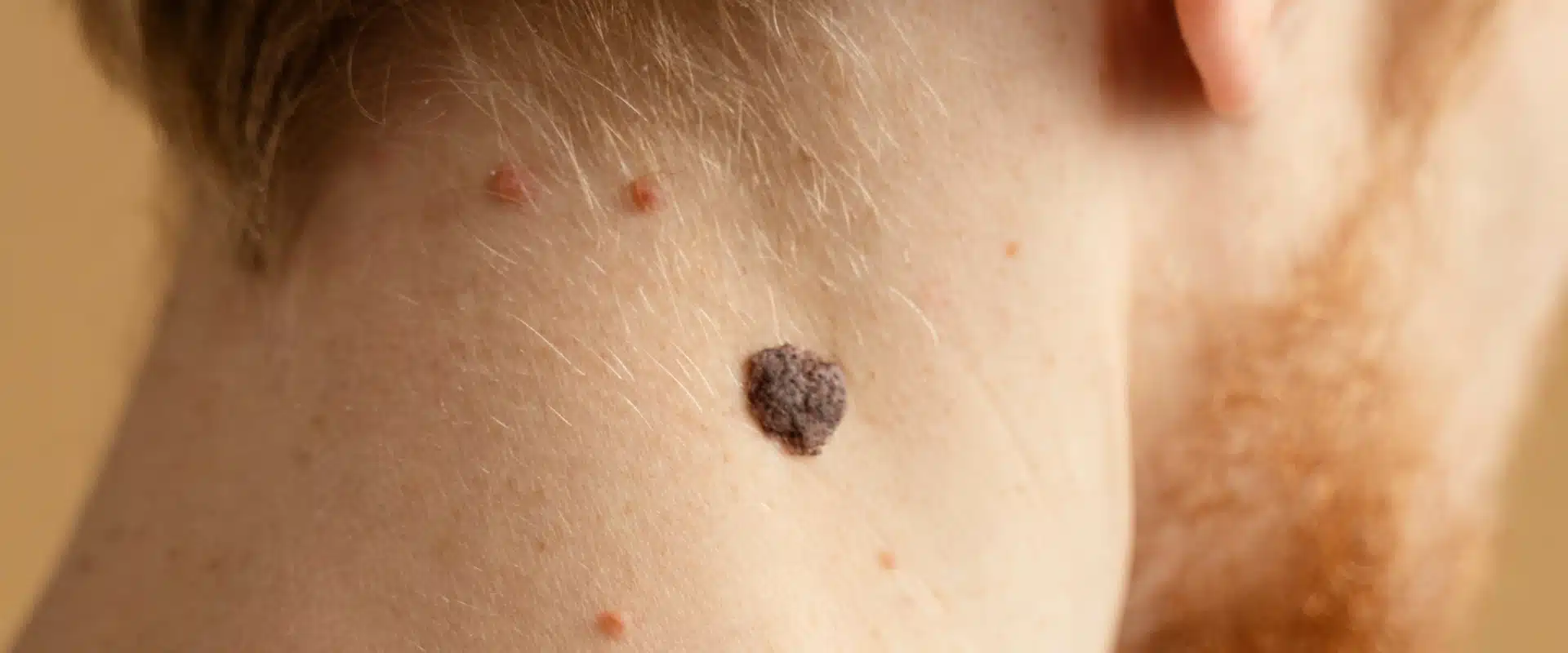The human skin, the body’s biggest organ, can expand in a variety of ways throughout life. These skin growths, also known as lesions, are prevalent and can range from harmless conditions such as moles and warts to potentially serious problems that necessitate medical attention. While many growths are harmless and caused by aging or hereditary causes, others may suggest underlying health issues. Skin growths are any unexpected alterations or bumps on the skin that can arise in a variety of shapes, sizes, and colors. These growths frequently come from factors such as age-related changes in skin texture and cell turnover, genetics, and environmental factors such as sun exposure, pollution, or allergies, which can cause skin irritation, and infections from viral, bacterial, or fungal pathogens can cause warts and other lesions.
Common Types of Skin Growths
Moles (Nevi):
Moles are pigmented skin lesions that usually appear as small, dark brown spots but can vary in size, color, and shape. While most are harmless, regular monitoring of moles is vital, especially for those with a family history of skin cancer. You should regularly monitor any changes such as asymmetry, border irregularity, uneven color, larger diameter, or evolution in size, shape, or color.
Warts:
Warts are viral skin growths caused by human papillomavirus (HPV) that can form anywhere on the body. They
can be treated using a variety of techniques, including topical medicines, cryotherapy, and laser therapy.
Skin Tags (Acrochordons):
Skin tags (also called acrochordons) are benign fleshy growths that frequently show up on the groin, armpits, or neck. Usually, they grow in places where friction is common. Despite their innocuous nature, they may be eliminated for aesthetic purposes or if they irritate the skin.
Keratosis:
Keratosis is an excess of keratin, a protein present in skin, hair, and nails. Actinic keratosis (AK) is precancerous (can progress to squamous cell carcinoma), induced by sun exposure, rough and scaly in appearance, and can be treated by topical medications, cryotherapy, and laser therapy.
Seborrheic Keratosis, on the other hand, is seen in older individuals and is characterized by wart-like, elevated lesions that can range in color from brown to black.
Dermatofibroma and Keratoacanthoma:
Keratoacanthoma is a quickly growing, dome-shaped nodule that frequently develops on chronic sun-exposed skin. Dermatofibroma is a firm, tiny lump that usually develops on the legs. They are usually benign and frequently arise from minor wounds like scratches or bug bites.
Xanthelasma:
Yellowish, cholesterol-rich plaques called xanthelasma frequently develop on the eyelids. Even though they are usually benign, their existence may be linked to high cholesterol. They can be removed for aesthetic purposes even though they are not medically required.
Sebaceous Cysts & Milia:
Sebaceous cysts and milia are common skin disorders that frequently manifest as little, harmless bumps. Usually larger and sebum-filled, sebaceous cysts can become infectious or painful. In contrast, milia are little white cysts that are often found in newborns but can also afflict adults. They are formed by trapped keratin. Although both disorders are usually benign, infected or unpleasant cysts may require medical care.
Treatment Options for Skin Growths:
The nature, cause, and whether a skin growth is benign or cancerous determine how it should be treated. Typical interventions include surgical excision (total removal of any lesions), cryotherapy (using liquid nitrogen to freeze growths such as actinic keratosis or warts), and laser treatment (for skin tags or moles). Topical medications can be used for small lesions such as actinic keratosis or warts.
Even though the majority of skin growths are benign, it’s crucial to keep an eye out for any changes that might indicate underlying issues. If you note a lesion showing any change in size, border, or color irregularity, growth, or bleeding, consult your dermatologist as soon as possible. Treatment results are greatly enhanced by early diagnosis of abnormal growths, particularly precancerous ones.
Melanoma rates increase with age, alongside basal and squamous cell cancers, due to accumulated sun damage and reduced cell repair ability. Key signs of skin cancer include a changing mole or spot that differs from the rest, an itchy, bleeding, or painful growth, a colored band around a nail, or a sore that does not heal or reoccurs. For any new or changing mole, you must routinely conduct self-examination using the ABCDE test and schedule regular skin cancer screenings with a dermatologist.
At OnSite Dermatology, we understand the unique challenges that seniors face regarding their skin, and we are committed to providing expert care and advice tailored to their unique needs. We offer essential skin cancer screenings, treatments, and professional medical care without needing transportation, making it convenient and accessible for older adults to maintain healthy skin, especially in community centers and retirement homes. For more information or to schedule a consultation, fill in the form below or give us a call on (877) 345-5300.

